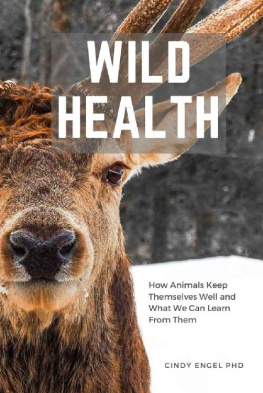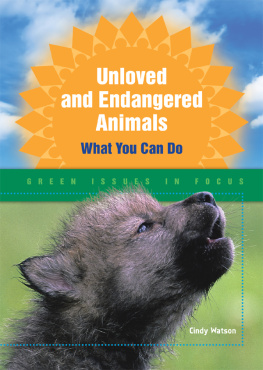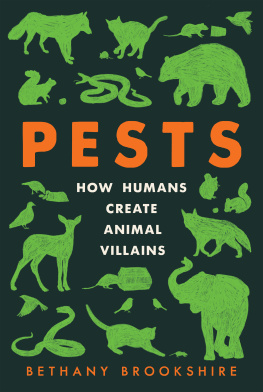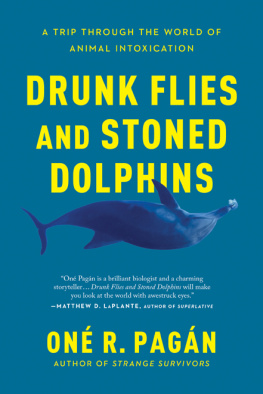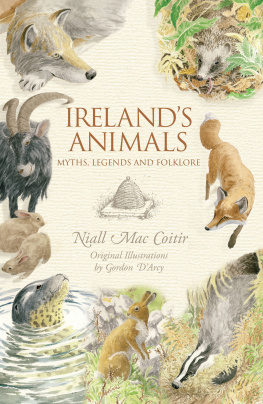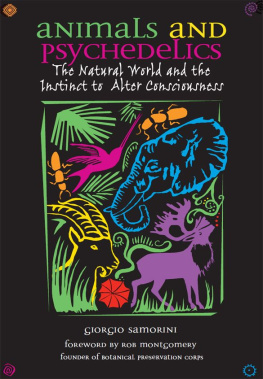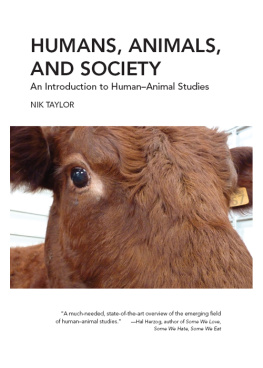
Copyright 2021 Cindy Engel
All rights reserved
ISBN: 978-1-80049-278-3
First published 2002 Houghton-Mifflin
Table of Contents
Ask now the beasts, and they shall teach thee; and the fowls of the air, and they shall tell thee.
-Job 12:7
The dog taken by fever seeks rest in a quiet corner, but is found eating herbs when his stomach is upset. Nobody taught him what herbs to eat, but he will instinctively seek those that make him vomit or improve his condition in some other way.
-Henry Sigerist, American physician, 1951
A sick animal retires to a secluded place and fasts until its body is restored to normal. During the fast it partakes only of water and the medicinal herbs which inherited intelligence teaches it instinctively to seek. I have watched ...self-healing so often.
-Juliette de Bairacli Levy,
European traditional herbalist, 1984
When the kunkis [tame elephants] are sick, the mahouts take them to the forest where the elephants pick the herbs or plants they need. Somehow theyre able to prescribe their own medicine.
-Dinesh Choudhury, Indian elephant hunter, 2000
OBSERVATIONS OF ANIMALS healing themselves with natural remedies have been documented in a long line of chronicles stretching back through Medieval Europe to the ancient civilizations of Rome, South America, and China. Numerous plants are named after animals that appear to use them in this way. The Navajo and Blackfeet Indians of North America watched wild bears dig up and use the roots of Ligusticum plants so frequently, and with such obvious benefit, that they named the plant bear medicine. The Chippewa Indians in Canada call Apocynum, one of their strongest herbs, bear medicine. European herbalists saw how sick dogs turned to eating a particular species of grass (Agropyron repens) so reliably that they called it dog grass. Other examples include hares lettuce, pigweed, catnip, and even horny-goat weed. Folk medicine is often reputed to have its roots in observations of animal behavior, and rural physicians have noted that North American pioneers discovered the rudiments of their folk medicine in the healing plants sought out by sick animals.
Until recently, though, scientists have been reluctant to accept stories such as these, dismissing them as a romantic anthropomorphism that inappropriately assigns human attributes to animals. In some cases, this is clearly so; but, as we shall see, scientists themselves have recently recorded animals performing actions that unquestionably look like self-medication, and it is no longer acceptable to dismiss all such stories out of hand. The subject deserves far greater scrutiny by the scientific community. For if wild animals are self-medicating, the implications are vast, not only for pharmacists searching for new drugs, but also for wildlife custodians hoping to improve the management and protection of wildlife, pet owners wanting to better the health of their companion animals, and farmers seeking to enhance the health of their livestock. We might even find ways of improving human health. As health fads come and go, and the facts appear increasingly contradictory, we are in urgent need of some common sense some firm ground on which to found our health care. If we can learn (or relearn) guidelines from the actions of wild animals, we should do so.
So far, much of the popular media response to these scientific findings has sensationalized animal self-medication as an example of supernatural animal wisdom. However, we shall see that there are other, more plausible explanations for how animals manage to keep themselves well.
To investigate animal self-medication scientifically, we must set the behavior in the wider context of general health maintenance. My aim in this book, then, is not only to establish whether animals are indeed self-medicating their ills, but also to explore what actions animals take to keep themselves well: how they deal with injury, infection, parasites, a barrage of biting insects, and even the debility of aging and of psychological disturbances. The process of teasing fact from fiction yields exciting and valuable new information for anyone interested in animal and human health.
The topic is huge. If I were to explore every aspect of how animals stay healthy in the wild, this book would certainly run to many volumes: several on the genetics of health, others on immunity, and still others on the social and psychological dynamics of health. Even limiting myself to the actions animals take to stay well, I have had to plow through a vast sea of interweaving material. It is not ideal to separate animal behavior from its associated physiology, as the two are inextricably interconnected (and both are interwoven with the environment of the animal), but the extraction does afford a focus that has hitherto been neglected. What emerges is a mere introduction or overview to a vast field of inquiry.
I should say a little about the animals of this book. Over a million animal species have been named, but estimates of the total number range from 1.5 million to more than 30 million (approximately 90 percent of these are thought to be in the tropics), and by far the majority of the species identified to date are insects. Most of the examples I use are birds and mammals, simply because their behavior has received more attention. Still, I have done my best to balance this bias by including examples of insect, fish, amphibian, and reptilian behavior wherever possible. A wild animal is defined as a product of natural selection in which only the individuals most suited to their environment have survived to breed, and the less well suited have been excluded from the gene pool. Thus, a wild animal in captivity is still (genetically) a wild animal. A domestic animal, in contrast, has been artificially selected by humans for certain characteristics such as temperament or appearance. Those individuals with the desired characteristics are used for breeding; those without are not. The domestic animal is therefore very different from its wild counterpart. In addition, there are so-called feral animals that were in the past subject to artificial selection but have since returned to the wild and to natural selection.
The human animal, Homo sapiens, is a hominid (human-type primate) that appeared about three hundred thousand years ago, having diverged from its closest primate relatives, the great apes, two million years before that. Throughout much of this book, I write as if we were separate or different in some way from other animals (because in many ways we are). However, it soon becomes apparent that we are not sufficiently separate or different enough to ignore the wealth of health advice available from these studies of wild animals.
My exploration of wild health has been a truly interdisciplinary journey in which overlapping and intertwining threads from specialist fields have been brought together, often for the first time. Into this eclectic mix is interwoven material from folklore, traditional medicine, and experimental and anecdotal observations-lest any shred of useful information be lost in the formation of this new fabric. Sometimes science and folklore reinforce each other. Sometimes they do not. As a biologist, I have many years of field and laboratory experience in the study of animal behavior, yet I am not an expert in any of the specialist fields described herein. This fact may work to my advantage, as the benefits of presenting an overview of wild health far outweigh the costs of losing detail in each area. Specialists may be irritated by my over-simplifications of their particular fields, but I encourage them to persevere for the sake of the emergent vista. Should readers wish to pursue the intricacies of any specific discipline, they will find review articles in the notes.
Next page
